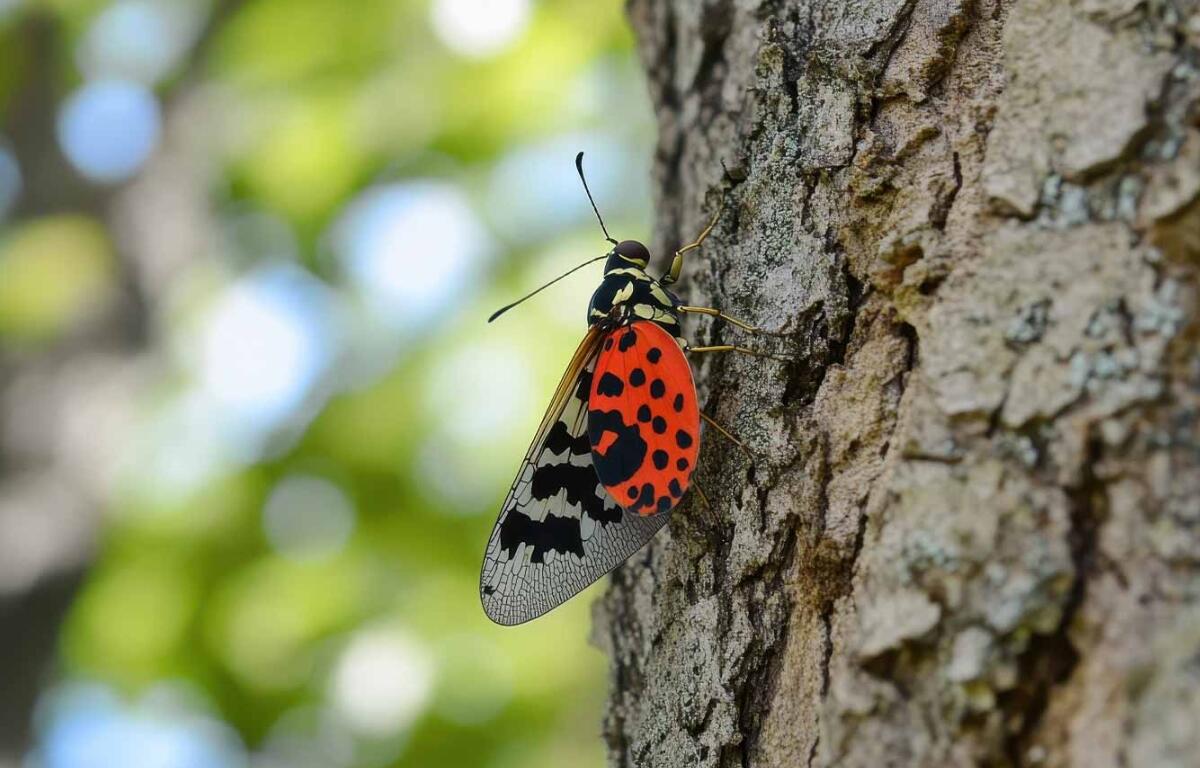BLACKSBURG, VA (Virginia Farm Bureau) — Man’s best friend has a new job: Sniffing out an invasive pest threatening crops and ecosystems.
Spotted lanternflies continue to spread across Virginia. And as experts seek ways to track and control their populations, a new Virginia Tech study found that trained citizen dog-handling teams may offer a solution.
Researchers from Virginia Tech and Texas Tech University recently recruited and trained 182 volunteer dog-handler teams from across the country to detect SLF egg masses. Resembling mud or lichen hidden on trees, rocks, vehicles and other surfaces, the egg masses are notoriously difficult for people to find—but not for dogs and their powerful noses.
After months of training, dogs were able to identify egg masses 82% of the time in controlled trials, and 61% in field tests. That’s much higher than human detection.
“These results provide proof of concept. Community dog teams could play a significant role in protecting their local environments and agriculture from invasive species,” the study noted.
The study highlighted the promising potential for citizen scent-detecting teams, especially given the high cost and scarcity of professional detection dogs. The approach has particular relevance to agriculture and farming, as SLFs pose a serious threat to grapes, apples, stone fruits, hops and other crops.
Sally Dickinson, a VT researcher who is leading the project, said using citizen dog handling teams to screen for egg masses in areas SLF isn’t known to inhabit “will provide valuable information for management and what to expect in the spring.
“And where the SLF is already, tracking and removing egg masses over the winter may impact the species density in that area,” Dickinson said.
During the study, many dog handling teams conducted searches in vineyards.
“They worked really well in that environment,” Dickinson said. “The rows of vines help keep the search systematic, and the dogs did very well detecting egg masses that humans missed.”
She believes it could be another tool in producers’ toolboxes for controlling the destructive, costly insects.
“Our vision is that citizen scientists—who could also be vineyard owners and farmers—and their dogs earn certifications that classify them to where they’re most suited to work, and an app or web platform would ‘match’ them with stakeholders looking to have their land inspected,” she explained.
Andy Seibel, who owns a vineyard in Roanoke County, said it’s encouraging to see continued research on SLF’s impacts and mitigation, in addition to consumers and producers doing their part to help eliminate the invasive insect.
“The vineyard industry remains vigilant and anxious about SLF’s potential impacts on crop quality as it expands its reach,” said Seibel, a member of the Virginia Farm Bureau Federation Specialty Crops Advisory Committee. “Growers seem to be facing new challenges every year, and it’s always a bit scary to see new pests, be it insect or disease.”
Virginia Tech researchers hope to expand this scent work to detect other crop threats, like powdery mildew.
Learn more about spotted lanternflies and find guidance on reporting and management.




